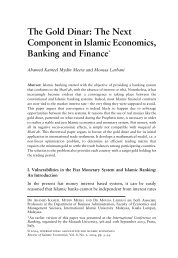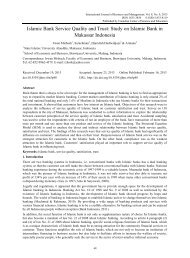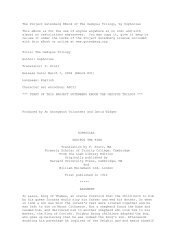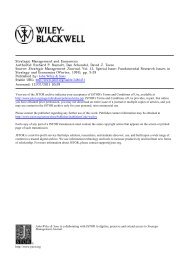The Oil Industry in Nazi Germany, 1936-1945
The Oil Industry in Nazi Germany, 1936-1945
The Oil Industry in Nazi Germany, 1936-1945
You also want an ePaper? Increase the reach of your titles
YUMPU automatically turns print PDFs into web optimized ePapers that Google loves.
NAZI OIL INDUSTRY 263<br />
Army High Command<br />
(OK W) Reich M<strong>in</strong>ister for Armaments Peich Economic M<strong>in</strong>istry<br />
and War Production<br />
Keitel Speer Funk<br />
Field Economic c<br />
State Secretary-Kehrl<br />
Office<br />
L . Petroleum Group<br />
Fischer<br />
Army Petroleum Agencies Reich Office for Petroleum<br />
I I I I<br />
Distribution I i I<br />
Wirtschaftsoruppe Transport and Technical Central Bureau Work<strong>in</strong>g Committee Other Distri-<br />
Kraftstff<strong>in</strong>dustric Storage Matters for Petroleum Lubricants bution<br />
(ZB) Distribution Agencies<br />
(ASV)<br />
Work<strong>in</strong>g Committee for Hydrogenation, Work<strong>in</strong>g Committee for Crude <strong>Oil</strong> Other Work<strong>in</strong>g Committees<br />
Synthesis and Carbonization (ARSYII) Production and Distribution (AEV)<br />
<strong>Oil</strong> Fields Ref<strong>in</strong>eries<br />
Source: Great Brita<strong>in</strong>, British Intelligence Objectives Subcommittee, BIOS Report 513, "Notes on the Organization of the<br />
German Petroleum <strong>Industry</strong> dur<strong>in</strong>g the War," by W. H. Thomas and J. G. Withers (1-31 October <strong>1945</strong>), 10.<br />
FIGURE 1<br />
General Organization of German Petroleum Production,<br />
Distribution and Utilization<br />
products. <strong>The</strong> function of these organizations, however, was purely<br />
consultative and adm<strong>in</strong>istrative. Ultimate authority for plann<strong>in</strong>g and<br />
direct<strong>in</strong>g the petroleum economy lay with government agencies, as<br />
shown <strong>in</strong> Figure 1. <strong>The</strong> Work<strong>in</strong>g Committee for Crude <strong>Oil</strong> Production<br />
and Distribution (AEV), for <strong>in</strong>stance, stood under the Wirtschafts-<br />
gruppe Kraftstoff<strong>in</strong>dustrie (Economic Group of the Fuel <strong>Industry</strong>),<br />
which controlled and coord<strong>in</strong>ated its actions with those of other work-<br />
<strong>in</strong>g committees. This group, headed by He<strong>in</strong>rich Biitefisch of I. G.<br />
Farben, the major synthetic petroleum producer, <strong>in</strong> turn stood under<br />
the Petroleum Group. <strong>The</strong> Petroleum Group also was headed by an<br />
I. G. employee, E. R. Fischer. Ultimate control of production lay <strong>in</strong><br />
the hands of Hans Kehrl, who held this responsibility both <strong>in</strong> the four-<br />
year plan organization and <strong>in</strong> the Speer m<strong>in</strong>istry. Two other important<br />
producers' organizations, the Central Bureau for Petroleum (ZB) and<br />
the Work<strong>in</strong>g Committee for Lubricants Distribution (ASV), were orig-<br />
<strong>in</strong>ally controlled by the Reich Economics M<strong>in</strong>istry, although they too<br />
later came under the control of the Speer M<strong>in</strong>istry. In any case, all












